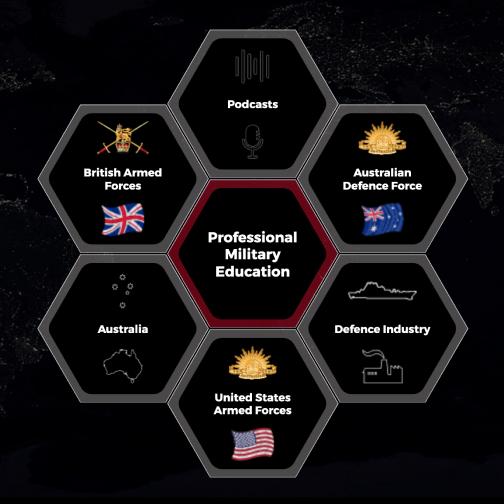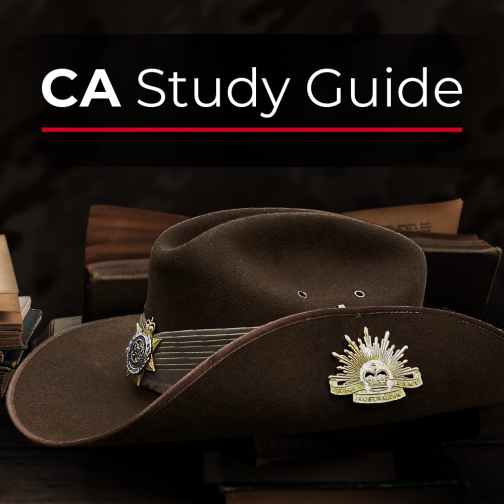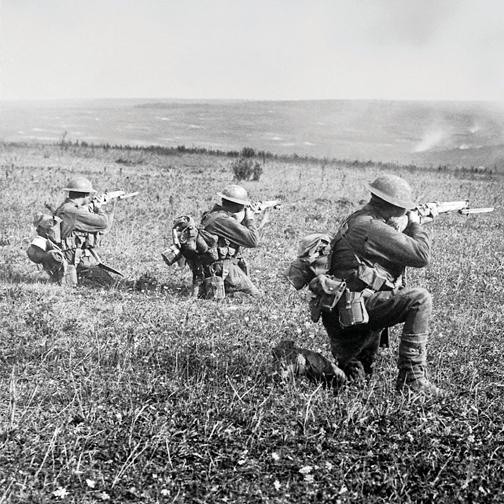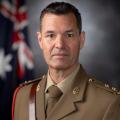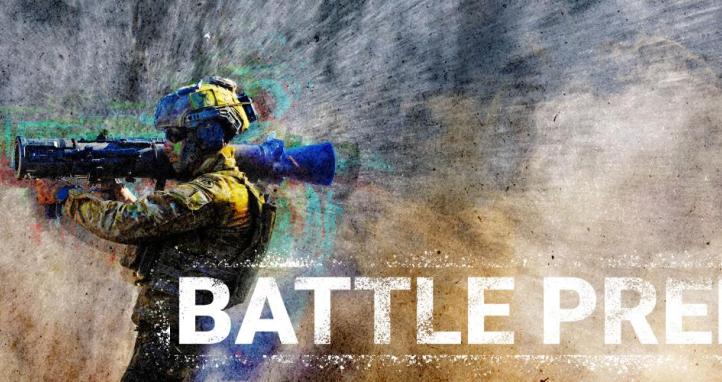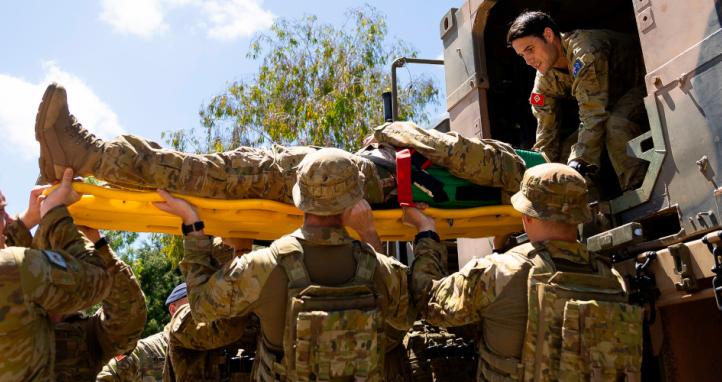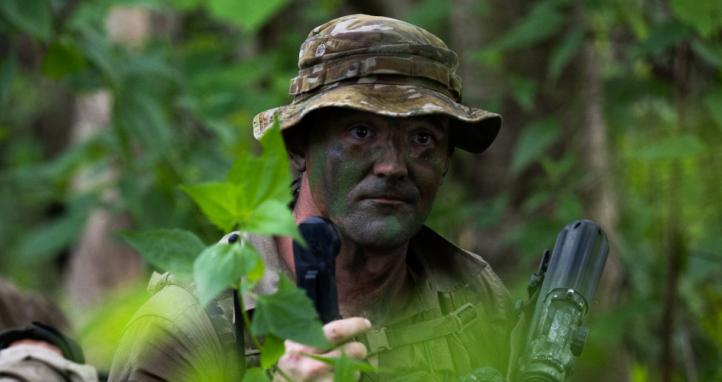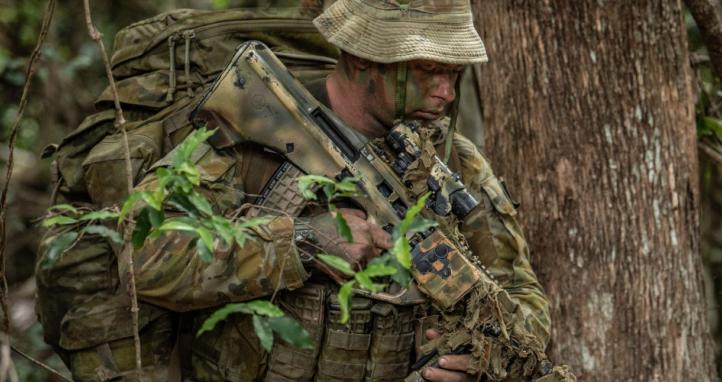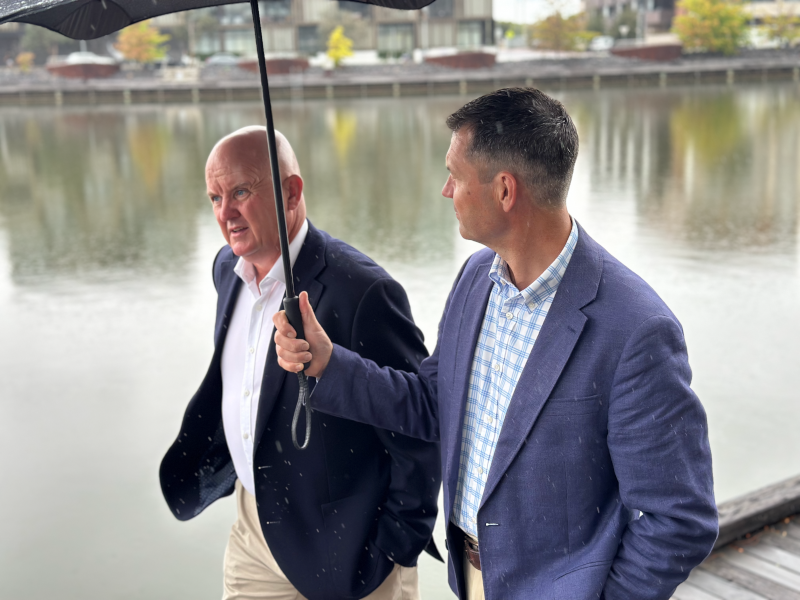
CMDR (ret.) Rob Wilson RN and LTCOL David Horton, Canberra, March 2025
We’re approaching the 110th anniversary of the ANZAC landing at Gallipoli, so I stop and flick through the twelve fat, red volumes edited by Charles Bean on the shelf by my kitchen. And in all that fine history, including the two he wrote about ANZAC, I realise there’s something missing – painfully absent.
There’s plenty to show Australian soldiers demonstrating what Bean called “reckless valour in a good cause” along with “resourcefulness, fidelity, comradeship and endurance that will never own defeat."
But while the Navy provided support in the way of transport, naval gunfire, and hospital ships, there was little ongoing collaborative planning or cooperation with their brothers in arms on the sea – either in the Royal Navy (RN) or the Royal Australian Navy (RAN).[1]
I’m happy to be corrected by the historians, but there appears to have been almost no functioning relationships between the commanders of land and maritime forces. There was no unified command, no sharing of capabilities, and no learning from each other.[2] This was a mistake we didn’t begin to address for decades.
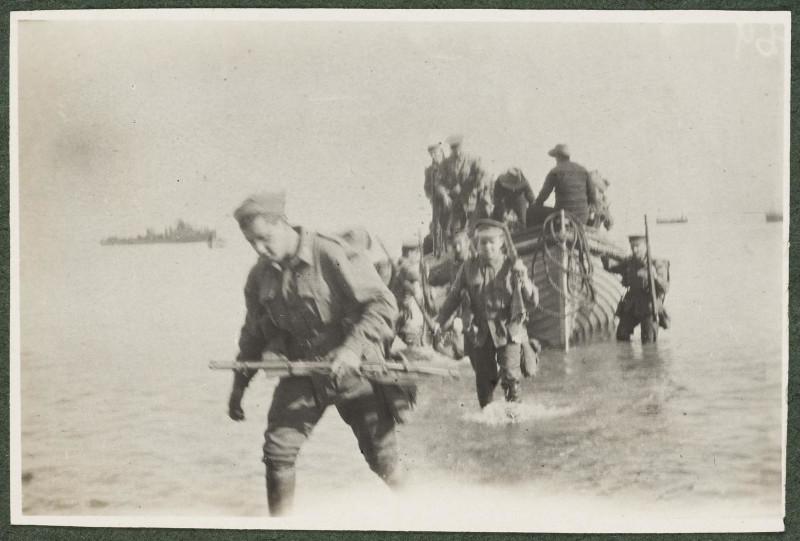
Landing at Gallipoli 1915 by H.C. Marshall, held by the Mitchell Library
The General and the Commander
To avoid such catastrophes in the future, I offer the following bold suggestion: the Army doesn’t just need more boats; it needs living connections at all levels with the Navy and the other Services. Whether it’s about Artificial Intelligence or amphibious warfare, we need to integrate with each other as part of a multi-domain integrated force.
Especially if, as Lieutenant General Simon Stuart keeps indicating, our next big battle is likely to be in the archipelago to our north or even on our shores, where land meets sea.
So, I got together with my mate Rob Wilson, a warship commander who’s served with the RN and RAN, and started gathering the lessons. It became clear that Rob’s outlook is shaped by his time on HMS Fearless, supporting the Royal Marines as they prepared for combat on shore.
While we enjoyed a beer, I left the conversation feeling sober about what war in our littoral will truly entail – distributed, chaotic, and lethal – and the necessity of building a force that will support one another to survive and succeed in that environment. Furthermore, we don’t have Australian Marines,our Army must integrate more closely with the Navy similar to how Marines do.
Nothing improves joint ops like lethality
Rob began candidly. When it was suggested that the army needs to adopt a naval mindset for future conflicts – and I’ll quote him in full here – he reshaped the entire issue:
“It's not about what the Navy doesn’t understand about the Army, or what the Army doesn't understand about the Navy. "
“The Army are on the front line of this fight. And I think that most sailors recognise that, and I'm damn sure that most soldiers do.”
“Navy don’t hold ground. So if we are to deter through denial, this is not just about Army being more lethal. It’s about how do we help Army be more lethal?”
Honestly, it wouldn’t be a bad thing if that quote was the first slide in every joint operations planning session in Russell for the next 12 months. This is what “joint” means. The Navy doesn’t need to fight the Army’s battle. It needs to enable it.
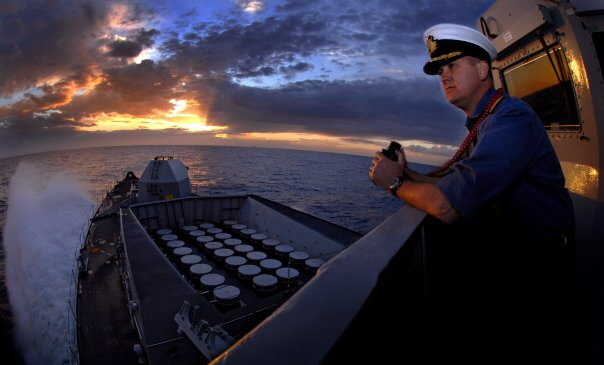
CMDR Rob Wilson on HMS Somerset, Aegean Sea, June 2008
Cornered by a Royal Marine
The language got spicy as Rob told me about learning to fully appreciate the needs of the Royal Marines through their commander. One day, he’ll tell the whole story, but the key moment came after Rob realised that he would have to completely rearrange the naval flotilla in order to give the Marines the provisions and ammunition they’d need ashore.
“The G3 says, Rob, I’ve got a f*ing problem, the bullets and beans I need tomorrow, are 300 f*king nautical miles out to sea.”
“I said something like, I'm good for a lot, but it takes 4 hours for a solid support ship just to move anchor, from there, they can only do 12 knots; the supplies are days away.”
“Anyway, he didn't like that answer. His way of dealing with that was to put me up against the bulkhead. Then, very gently, he just came up very close and said, you know what, you’re a good bloke Rob. But don’t ever forget. You are my b*tch.”
“And he was right. The mission comes first.”
Rob reckons this was, shall we say, a helpful clarification about where we all fit in. And by applying the principle therein, the problem was solved, via helicopter ferry, in short order. And so, we have our second lesson from Rob. The Services work together fine, when the common effort is directed at supporting the operator who is actually in the fight.
We need to recognise the common threat: mass
The third lesson is one that both the Navy and Army are learning very slowly and perhaps need to teach each other: mass and resilience matter more than exquisite platforms. Rob put it this way:
“What we all struggle with – whether you’re offshore or afloat – is mass. We really struggle when it’s everything at once.”
“A Type 23 frigate is pretty good against the supersonic target, coming on the sea surface. It's designed to be able to see it with just enough time to kill it.”
“You send in ten or five or even three much less sophisticated weapons, from different points of the compass? I’m done.”
The Armed Forces of Ukraine are putting this principle of inexpensive mass to excellent use. While the sophisticated Storm Shadow missiles, worth a couple of million a pop, are a huge capability boost, they’ve made nothing like the impact of one-way armed drones worth a few thousand. Rob didn’t say it, but the maths is clear: we need to learn the lesson of mass and stop buying bespoke, exquisite kits.
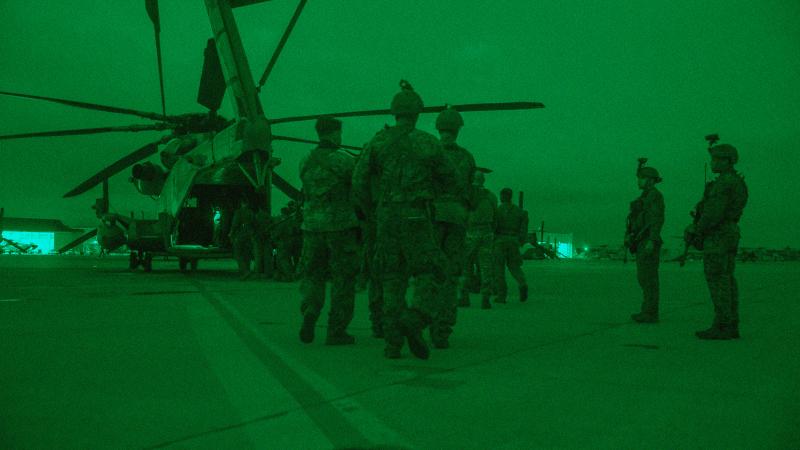
Australian soldiers from 7th Signal Regiment with U.S. Marines from 2nd Radio Battalion, and Royal Marines in North Carolina 2022
Order and chaos
Rob points out that the Navy has always had very different challenges. For a start, the sea itself tries to kill you before the enemy even shows up. On a ship, resources are inherently finite. So maritime operators demand order and hate chaos. As Rob put it:
“We’re living in an ordered society at sea. Everything is clean. Everything is within arm’s reach. But on land? Every 100 yards, the environment changes. Success comes from ingenuity and courage, not control.”
The Army is closer to risk and chaos and much closer to the fight. It now uses robots to neutralise Improvised Explosive Devices (IED) and Uncrewed Aerial Systems (UAS) for reconnaissance and is exploring Uncrewed Ground Vehicles (UGV) and armed drones. It’s had to learn fast in Iraq and Afghanistan. It’s thinking about how to survive and win with smaller forces, smarter tools, and more adaptable leaders. We need to be the ones who pass on what we’re learning.
A Team of Centaurs
The future won’t be won by the best ship or the biggest gun. It’ll be won by the side that figures out how to fight smart, fast – and using software as a force multiplier.
Until recently, the RAN and the Army haven’t been much interested in mass because all mass has been dumb. But software has changed that.
Rob introduced software solutions to the RAN when he developed Australia’s Maritime Warfare Strategy. I’ve spent my entire career in software, particularly in Defence Industry, where Rob and I met. And we’ve both come to the same conclusion.
The power of software for Defence isn’t simply its incredible ability to process information, or even the autonomy it can generate. Rather, it’s the fact that software can be replicated – infinitely replicated – giving soldiers and sailors the massed, AI-enabled, autonomous weapons they need. Put another way: software is easy to update, steel takes decades.
As Rob put it at the end of our conversation:
“For anyone confronting or wishing to deter a much more powerful adversary… you need affordable mass. And that’s what leads you to software first.”
“Hardware-first thinking ... leads to gold-plated platforms that arrive late, cost billions, and can’t scale”
He’s right. Hardware-first thinking, which still dominates military procurement, leads to gold-plated platforms that arrive late, cost billions, and can’t scale. But when you take a software-first approach, your starting point is flexibility. You define the effect you need, code it, and only then build or adapt the hardware to carry it. As Rob said:
“If you continue down the road we are currently on… you’re trying to build a complete solution, which will almost certainly be obsolete by the time it sees the light of day.”
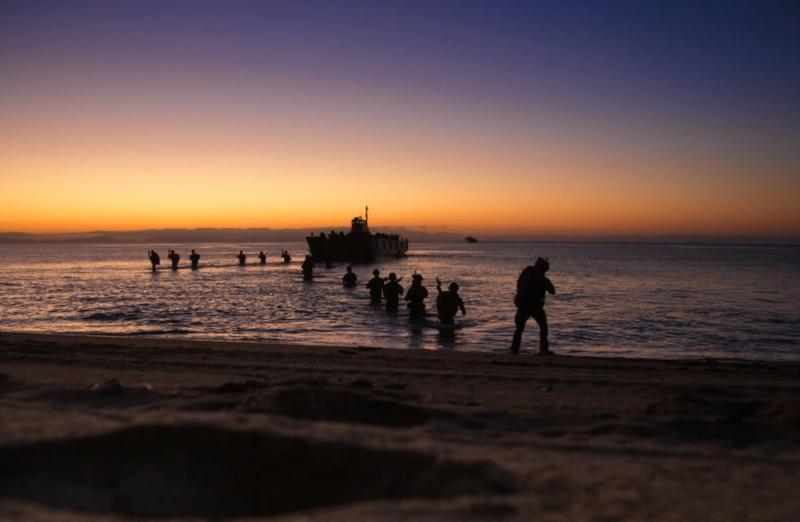
Multinational Amphibious Landing during Exercise Talisman Sabre 21 (credit: LCPL Alyssa Chuluda)
Here’s what the Navy and Army need to do, something we didn’t accomplish at Gallipoli. We must make collaborative connections between Army and Navy warfighters an integral part of their roles. This should be regarded as essential to career management and advancement. This principle applies across the Total Workforce, including both full-time personnel and Reservists.
We need to prod each other to look over the horizon and think about what we’re both going to need next. Our focus must shift – not just to autonomy or AI in theory but to actual systems procured rapidly that deliver mass affordably.
For the littoral fight, we’ll need crewed and uncrewed systems working together across land and sea; not to mention air, space, and cyber. What Rob talked about: “centaur” systems – part human, part AI – referred to as Human-Machine Teaming (HUM-T). But the first system we need to fire up is the system of relationships between our domains.
End Notes
[1] Professor Williamson Murray, argues that Gallipoli showed Navy and Army were not effectively collaborating, and had no unified command, "one might note that interservice cooperation between the navy and the army, if it existed at all, was based on the outdated experiences of the Crimean War" Murray, Williamson. "The Gallipoli Gamble." Naval History 29, no. 2 (April 2015). U.S. Naval Institute. Accessed April 9, 2025. https://www.usni.org/magazines/naval-history-magazine/2015/april/gallipoli-gamble.
[2] Following the war, the Dardanelles Commission recommended that all future amphibious operations should have land and sea commanders on the same boat. See: Naughton, Patrick William. "Gallipoli: Lessons from the Great War on the Projection of Power and Joint Forcible Entry." Joint Force Quarterly, no. 93 (2nd Quarter 2019). National Defense University Press. Accessed April 9, 2025. https://ndupress.ndu.edu/Media/News/News-Article-View/Article/1848019/gallipoli-lessons-from-the-great-war-on-the-projection-of-power-and-joint-forci/.
